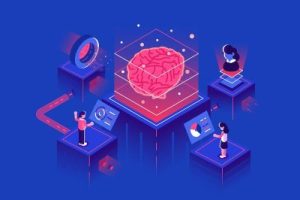 Machine Learning (ML) and other aspects of Artificial Intelligence (AI) are becoming a critical part of government modernization plans. The fear that "machines will replace people" has largely disappeared. In fact, people see the benefit that ML provides for human workers. ML technology allows machines to do what they are best at - fast computation of large data sets - freeing up humans to do what they do best - analyzing and making sense of the data produced.
Machine Learning (ML) and other aspects of Artificial Intelligence (AI) are becoming a critical part of government modernization plans. The fear that "machines will replace people" has largely disappeared. In fact, people see the benefit that ML provides for human workers. ML technology allows machines to do what they are best at - fast computation of large data sets - freeing up humans to do what they do best - analyzing and making sense of the data produced.
The new reality is that while machines will not replace people, those that refuse to adopt and adapt to AI-enabled tools may in fact find themselves replaced by other people that do. The proof is in the pudding. ML tools are helping government teams meet critical challenges of unemployment fraud, natural disasters, racial equity, and healthcare. Continue reading

 In an era where we're often asked to "do more with less," government is finding the need to do more with more when it comes to data. There is no lack of data within government systems. The challenge has always been getting the right access to it and then making it usable. Data can go a long way in helping meet key government-wide goals of better customer experience and increased equity in government service. There are a number of interesting applications of Big Data solutions across government to illustrate the power of data to make a difference.
In an era where we're often asked to "do more with less," government is finding the need to do more with more when it comes to data. There is no lack of data within government systems. The challenge has always been getting the right access to it and then making it usable. Data can go a long way in helping meet key government-wide goals of better customer experience and increased equity in government service. There are a number of interesting applications of Big Data solutions across government to illustrate the power of data to make a difference. The government's relationship with cloud computing has been an evolving affair. Initially, there was skepticism that cloud solutions could not provide the needed security that on-premise systems had been providing. With checks and balances provided by FedRAMP, security concerns were slowly but surely overcome. With the move to more remote work and the demand for digital interaction with citizens, cloud has moved from a novel approach to a necessary part of the Federal IT infrastructure.
The government's relationship with cloud computing has been an evolving affair. Initially, there was skepticism that cloud solutions could not provide the needed security that on-premise systems had been providing. With checks and balances provided by FedRAMP, security concerns were slowly but surely overcome. With the move to more remote work and the demand for digital interaction with citizens, cloud has moved from a novel approach to a necessary part of the Federal IT infrastructure. The Department of Health and Human Services (HHS) has been in the spotlight like never before with their critical role in managing the pandemic. While there is a lot of work still to be done on that front, other critical efforts are taking place across HHS agencies that will have an incredible impact on the health and well-being of citizens.
The Department of Health and Human Services (HHS) has been in the spotlight like never before with their critical role in managing the pandemic. While there is a lot of work still to be done on that front, other critical efforts are taking place across HHS agencies that will have an incredible impact on the health and well-being of citizens. Chief Data Officers
Chief Data Officers
